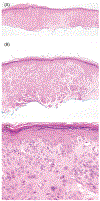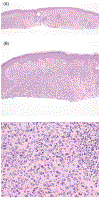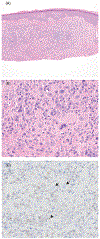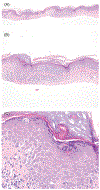Germline mutations predisposing to melanoma
- PMID: 32249949
- PMCID: PMC8232041
- DOI: 10.1111/cup.13689
Germline mutations predisposing to melanoma
Abstract
Nearly 15% of melanomas occur in patients with a family history and a subset of these patients have a germline mutation in a melanoma predisposing gene. CDKN2A mutations are responsible for the majority of hereditary melanoma, but many other susceptibility genes have been discovered in recent years, including CDK4, TERT, ACD, TERF2IP, POT1, MITF, MC1R, and BAP1. Additionally, melanoma risk is increased in mixed cancer syndromes caused by mutations in PTEN, BRCA2, BRCA1, RB1, and TP53. While early onset, multiple tumors, and family cancer history remain the most valuable clinical clues for hereditary melanoma, characteristic epithelioid cytology of melanocytic tumors may suggest an underlying BAP1 mutation. Herein, we review the clinical and histopathologic characteristics of melanocytic tumors associated with these germline mutations and discuss the role of genetic counseling.
Keywords: CDKN2A; germline mutation; hereditary; melanocytic nevus; melanoma.
© 2020 John Wiley & Sons A/S. Published by John Wiley & Sons Ltd.
Conflict of interest statement
CONFLICT OF INTEREST
The authors declare no potential conflict of interest.
Figures




References
-
- Reddy BY, Miller DM, Tsao H. Somatic driver mutations in melanoma. Cancer. 2017;123(S11):2104–2117. - PubMed
-
- Helgadottir H, Höiom V, Tuominen R, et al. Germline CDKN2A mutation status and survival in familial melanoma cases. J Natl Cancer Inst. 2016;108(11):545–452. - PubMed
-
- Clark WH Jr, Reimer RR, Greene M, Ainsworth AM, Mastrangelo MJ. Origin of familial malignant melanomas from heritable melanocytic lesions. The B-K mole syndrome. Arch Dermatol. 1978;114(5): 732–738. - PubMed
Publication types
MeSH terms
Substances
Grants and funding
LinkOut - more resources
Full Text Sources
Medical
Research Materials
Miscellaneous

